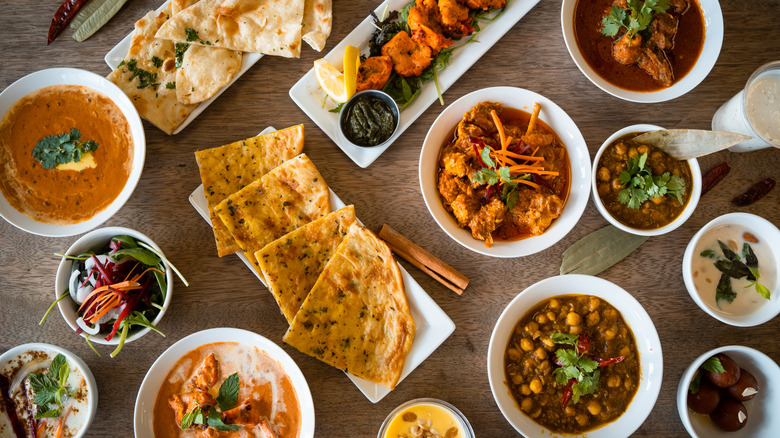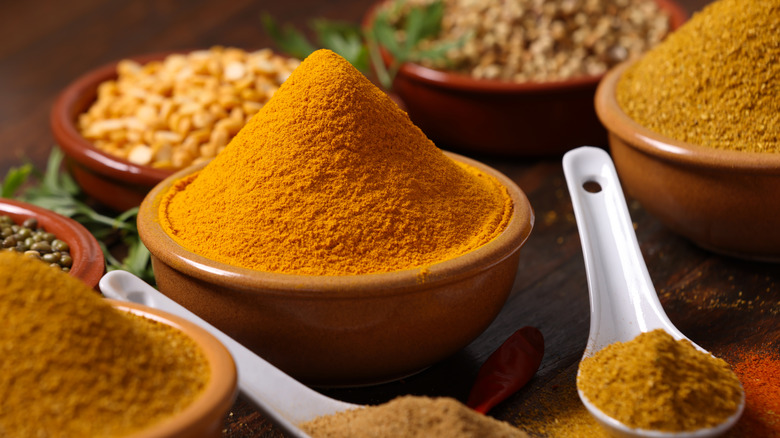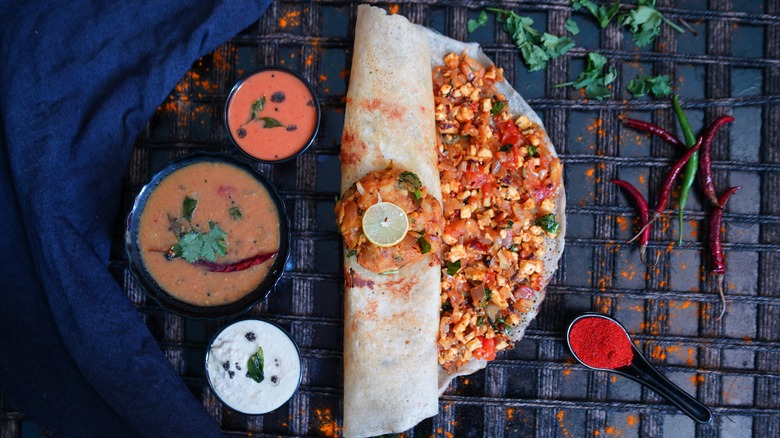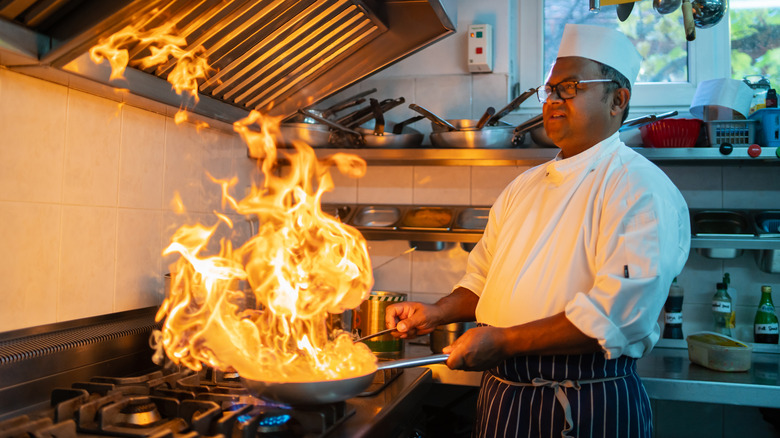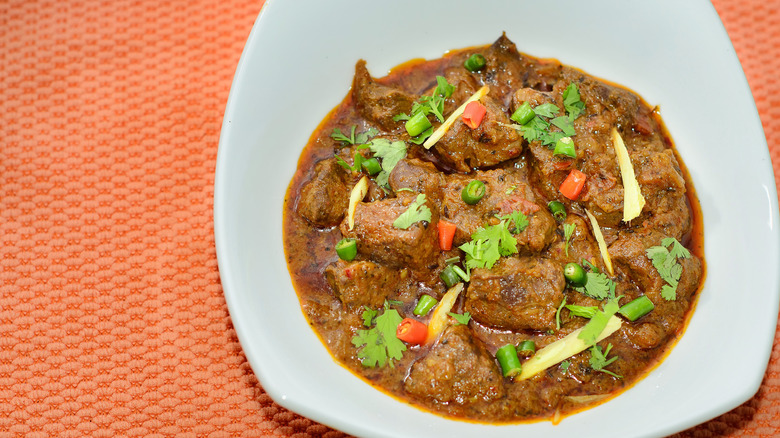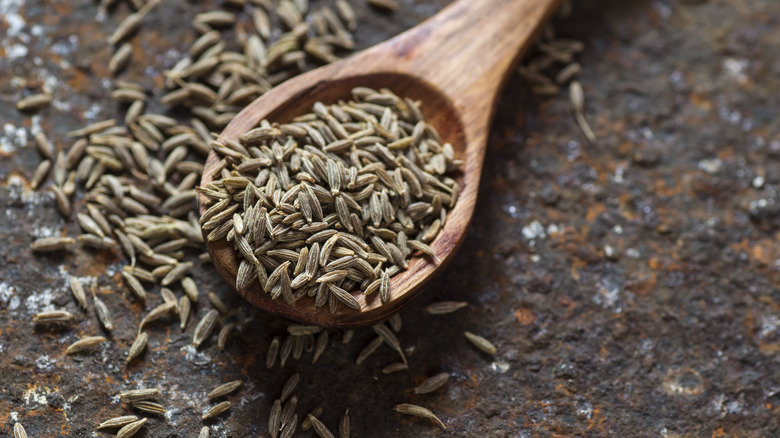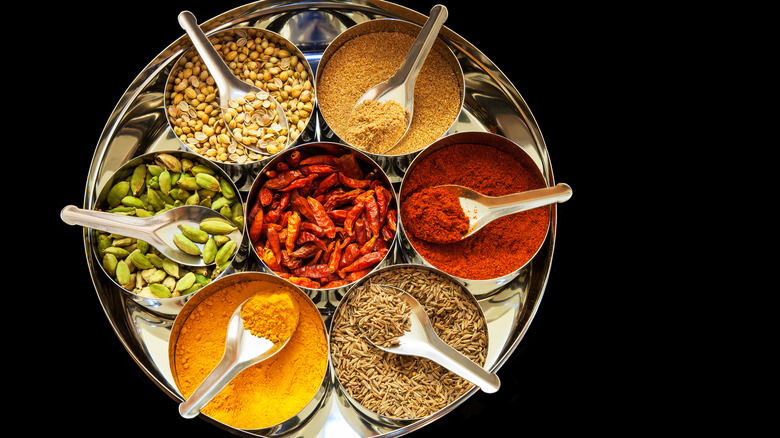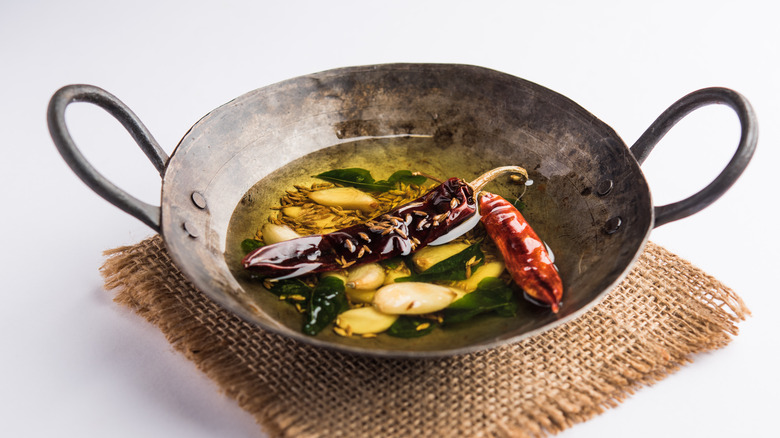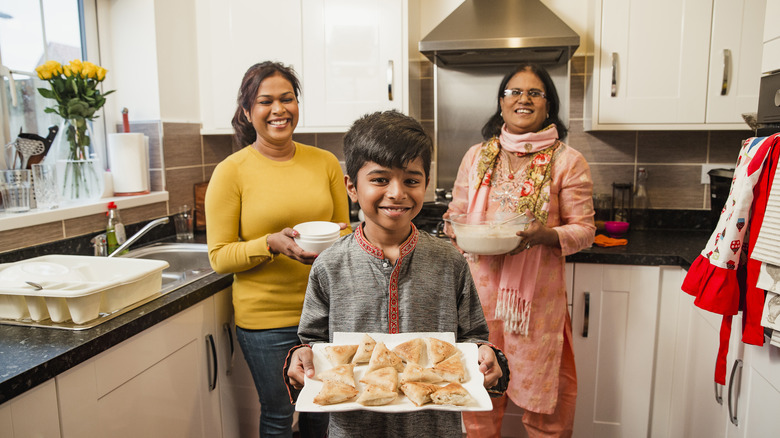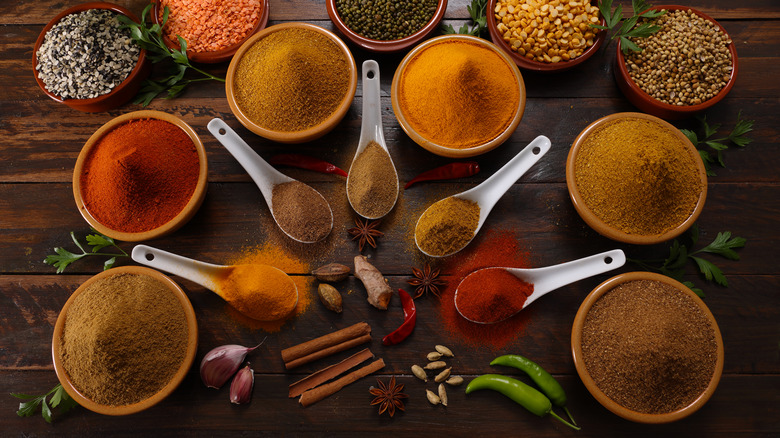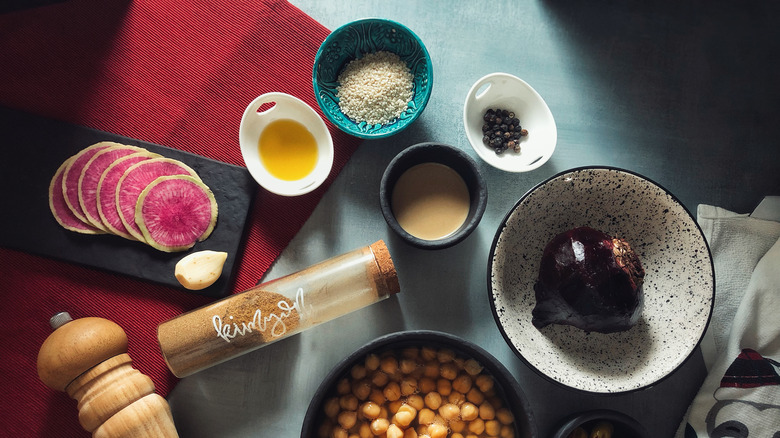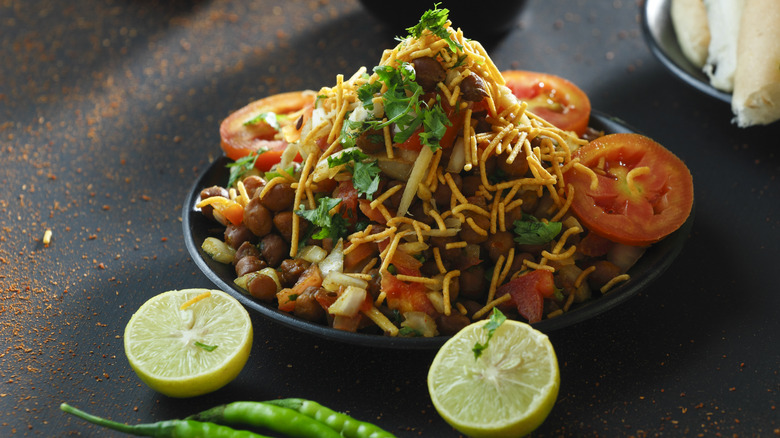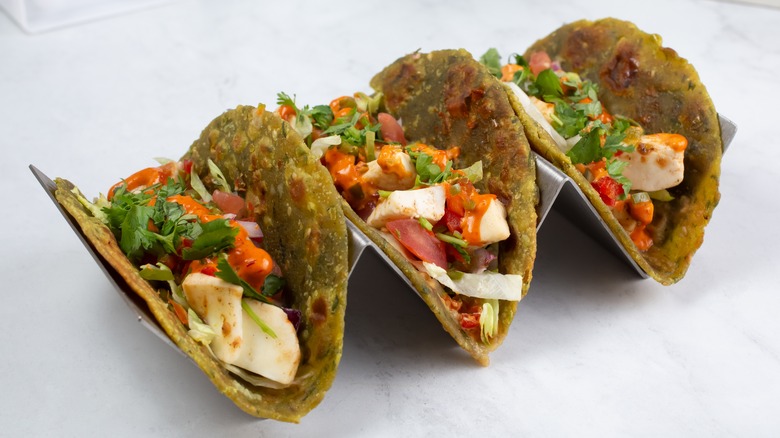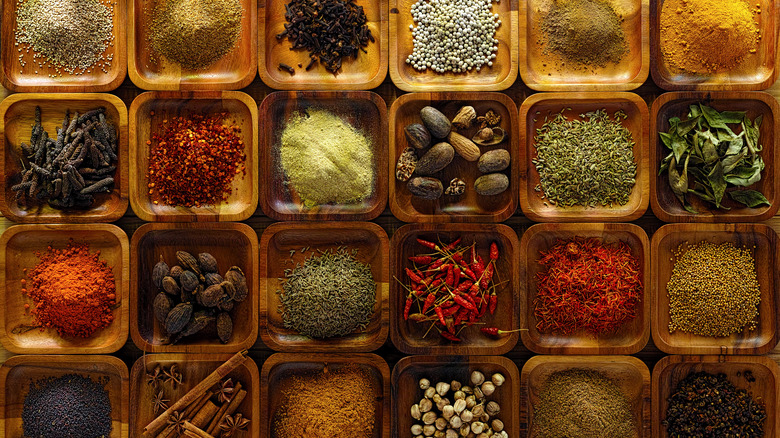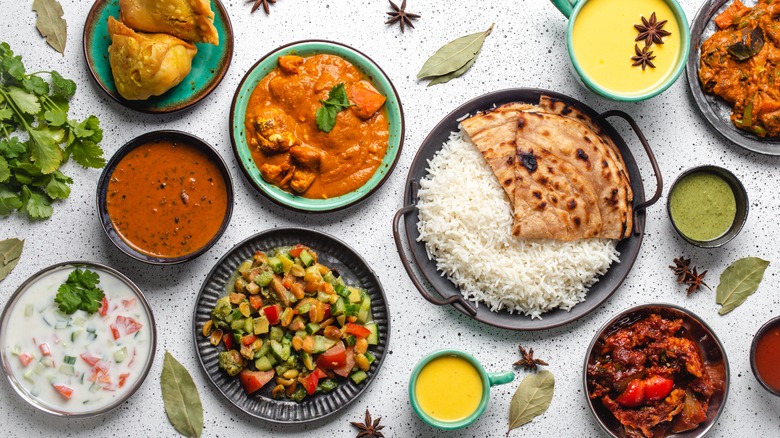Mistakes Everyone Makes When Cooking Indian Food
Indian food encompasses a range of food types, ingredients, cooking styles, and dishes. So, if you're trying to make it at home with just a little bit of knowledge, it's natural that it can seem overwhelming. There are plenty of common mistakes that many people make when cooking Indian food, as well as misconceptions about the cuisine.
We're serious about cooking, so we want to help you make the best Indian food you can by avoiding these frequent missteps. From using curry powder in place of traditional spice blends to making substitutions that end up ruining your dish, there are a lot of potential mistakes to make.
We spoke to five experts in Indian cooking, including chefs and food bloggers, to give us insider information on Indian cooking. After interviewing them, we used their advice to distill the 14 major mistakes that people make when cooking Indian food. Learn how to avoid these problems, and you'll soon be making the best Indian food of your life.
Using curry powder
If you've been reaching for the curry powder every time you make Indian curries, then you've been making a mistake. Sure, it might seem like the obvious choice, but curry powder isn't traditionally used in Indian cooking at all. Balpreet Singh Chadha, corporate chef at Sanjh, explains, "Curry powder is not an Indian spice blend. Curry powder is a blend of spices that comes from British colonial India that Indians made for the British; however, it is not used in traditional Indian food."
According to Shilpa Joshi, food blogger at Some Indian Girl, curry powder was invented to make Indian food easier to make with a one-size-fits-all blend of spices. However, she notes that by using it, "you lose the nuance of flavor you get with the amount and types of spices used in different recipes and therefore lose the true flavor of a dish."
But, there are alternative spice blends that are actually used in traditional Indian cooking. "Some of the Indian spice blends that are most popular are garam masala, thanda masala, chai masala, biryani masala, chaat masala, kebab masala, and podi masala," says Chadha. "Each different spice blend has a unique purpose depending on the dish and region of India it comes from." So, you don't necessarily have to use individual spices for every recipe or make your own spice blends (although you certainly can); you just have to ditch the curry powder for blends such as garam masala and chaat masala.
Not experimenting with regional Indian cuisine
For many people in the United States, Indian food begins and ends with the types of dishes that you can get from your local Indian restaurant. While these might be delicious, there's so much more to Indian food than this.
Shweta Garg of the food blog Masala and Chai explains that there's a saying that "In India, food changes every 100km." She goes on to say that North Indian food is the most popular in the West, "we're talking Mango Lassi, Butter Chicken, Chana Masala, etc. They tend to be dishes that are creamier and therefore less spicy." But, there's a huge amount of regional variation, which is often down to the types of food available in the region. "In Kerala, you'll see a lot of bananas, plantains, and coconut in some of their dishes because it's a more tropical climate," she says. Meanwhile, "in Kolkata and Goa, you'll see more fish since it's near water."
Chef Sujan Sarkar of restaurants, such as Baar Baar in Los Angeles and Indienne, explained regional variations in more detail. "We don't have the space to do every regional cuisine justice, but for starters, in Western India," Sarkar states, "we have Rajasthan, which is famous for royal Rajputana cuisine, then we have Gujarat, which is completely a vegetarian cuisine sweet and sour, then you have coastal Western Ghat cuisine known as Konkani, which travels from Mumbai to Goa and is heavy on seafood, coconut, and souring agents."
Cooking at too high a temperature
If you're the kind of cook who likes to turn your stove up to 11 and hope for the best, you'll need to take a more nuanced approach to cooking Indian cuisine. "Not being mindful of stove temperature or trying to up the heat to rush through the cooking process can affect the development of flavors," notes Joshi. She says you should "try not to keep the heat too high to avoid burning ingredients and allow the dish time to develop flavor. Allow the spices to release their flavors gradually, and let the dish simmer to develop complexity."
So, if you've heard the old adage, slow and steady wins the race, that certainly applies to Indian cooking. Make sure to pay attention to the recipe in question and set your burner to the specified temperature. There's no point ruining your meal just to shave a couple of minutes off the cooking time. Chadha also backs this up, saying that many people don't know "a lot of Indian food is cooked by using a slow cooking method, so you need to have a lot of patience." Do yourself a favor and keep it steady to get the best, most flavorful results.
Assuming all Indian food is spicy
If you've been put off cooking Indian food because you think it's all spicy, then you've fallen victim to a common misconception. It's a mistake not to try more Indian cooking because of the perceived spice level. This misapprehension doesn't come from nowhere, however. Some Indian dishes are spicy. But there are also a huge number of dishes that are extremely mild or don't use hot spices at all.
"Indian cuisine is not simply about heat and spice," Sarkar remarks. "Yes, chili peppers and other fiery ingredients are certainly used in many dishes, but they are not the be-all and end-all of Indian cooking." Some of this is down to confusion between the use of spices and a dish being spicy in terms of heat. "Some people are really scared of spices and rarely recognize that the use of spices does not mean the dish is spicy," says Garg. She notes that, for example, "green cardamom does not lend heat to a dish." Many spices used in Indian cuisine are flavorful but not at all hot.
You'll also find some variation according to who cooks the dish. Chef Deepak Saxena of Desi PDX, Masala Lab, and Chaat Wallah says, "I like to call the food I serve flavorful, but I don't actually use a lot of chilies to keep it more approachable." So, there's always the option to dial down the spice in a dish that's usually spicy by using fewer chilies.
Avoiding whole spices
Whole spices can be intimidating when you aren't used to cooking with them, but it's a mistake to avoid using them altogether. We understand that it's tempting to always use ground spices, whether single spices or spice blends, but you'll open up a whole new world of flavor by using whole spices. One of the reasons for using whole spices is that the volatile oils that give spices their flavor degrade when exposed to air. Grinding spices exposes them to a lot of air, so jars or ground spices lose some of their flavor and complexity over time. Whole spices give you stronger and brighter flavors, so they shouldn't be ignored when a recipe calls for them.
"Whole spices are generally cooked in oil, and it leaves all aromas and flavors in the oil, which adds the notes to the curry or gravy," Sarkar explains. With "powder spices, the whole spices are dry roasted together and then made into a powder form," he adds. "Powder spices are used in different stages of curries or gravies to add flavors." So, there's room for both powdered and whole spices in Indian cooking — often, both are used in the same dish. The key is simply following the recipe and using whole spices or ground spices as directed.
Making incorrect substitutions
You're following a recipe that calls for coriander, but you don't have any. You search through your spice rack and think maybe cumin will do instead. Well, that's a mistake. Someone who's extremely experienced with Indian cooking might feel comfortable making substitutions, but if you do it with little knowledge, you're likely to end up with a dud of a finished dish on your hands.
Although it's fairly common for Indian recipes to contain multiple spices, they all play a role. So, if you miss one out or replace it with something different, the recipe just won't turn out the same. If you're lucky, you'll still end up with something that tastes good, but it won't taste the way it was supposed to.
Joshi has noticed a common mistake people make when cooking Indian food is "assuming all spice blends are the same or substituting one for another without understanding their distinct flavors." To avoid this mistake, she says you should "familiarize yourself with different spice blends and use them according to the recipe. Garam masala is not the same as curry powder, for example."
Not blooming their spices
One common problem that Saxena has noticed is people not blooming their spices when cooking Indian dishes. "Not all but most spices need to be bloomed in hot oil to release their flavor," he explains. "If you don't do this, you'll end up with a weaker flavor profile and also the taste of raw spices — raw turmeric in particular is very strong and overpowering."
Also known as tempering or tadka, the process of blooming spices cooks them to make their flavors even more palatable and also leaves you with an infused oil that's often incorporated into the dish. So, how do you bloom spices? Start by heating about two tablespoons of oil or ghee over medium-low heat, then add your spices and cook until they smell fragrant — usually a minute or two.
But, there are some potential mistakes to be made when blooming spices. Joshi notes that "overheating or underheating the oil when tempering spice leads to burnt or undercooked flavors." There's an easy way to check oil temperature, though. "To test if the oil is hot enough, drop a single cumin seed or mustard seed into the oil. If it sizzles and crackles, the oil is ready," Joshi says.
Assuming all Indian food is hard to make
It's a mistake to let yourself be put off cooking Indian food because you assume that it's difficult to make. Like any cuisine, some dishes are trickier and more time-consuming to make than others. But there are still plenty of easy recipes that you can whip up in a flash.
"There are some complex Indian dishes — korma, for example — that require a multitude of steps and ingredients, but once you have an understanding of the basic processes, you can throw together a pretty simple curry with just a few ingredients in like 30 minutes," Saxena says.
Sometimes, this worry is about unfamiliar ingredients and processes. But, generally, these concerns are unfounded. "I think many people may be intimidated by long ingredient lists, but a significant portion of those ingredients are likely to be spices," Joshi remarks. So, read through a recipe thoroughly rather than scanning the ingredient list and assuming it's going to be complicated. You might be surprised about how simple some Indian dishes are to make.
Altering the balance of spices in a dish
According to Sarkar, "the ratio of different spices used in any given dish can completely change the flavor of the dish." If you only use Indian recipes as a template and adjust the amounts of spices in a recipe according to your perceived tastes or preferences, you might end up with a very different meal. "Each spice has its unique contribution to the dish, and altering the ratios can drastically change the final taste," he adds. Ultimately, don't go rogue. Trust the recipe and follow it to the letter.
You should also avoid adding too many chilies or other hot ingredients. "Another common mistake is using too much spice," says Sarkar. "While Indian cuisine is known for its bold flavors, it is important to use the right amount of spice to balance the dish. Using too much spice can overwhelm the other flavors in the dish, making it unappetizing." You want to make a dish that has the perfect balance of spices and flavors, not something that tastes overwhelmingly of chili or whichever other spice you decided to add piles of to your recipe.
Not measuring and prepping ingredients in advance
You'll have more success cooking Indian food if you do enough prep work ahead of time and ideally have all your ingredients measured out and ready to use. "Cooking Indian food does require you to have your mise en place game be strong as it's fairly prep heavy," notes Saxena. For those who don't know, mise en place is the concept of having all your ingredients gathered, prepped, and — ideally — measured before cooking begins.
Joshi also advocates for preparing and measuring ingredients before you begin cooking. "This way, while you are cooking and using techniques you are not used to — like making a tadka (tempering of spices in oil) — you don't need to keep stepping away and possibly burn your spices," she explains. Basically, if you're prepared in advance, you're less likely to make any errors, and you're more likely to end up with a delicious meal.
Thinking all Indian food is curry
It's incorrect to assume that all Indian food is curry, and it means that you'll miss out on a wide range of dishes if you think that all Indian food is curry-adjacent. "Curry is a generic Western term for saucy Indian dishes; not all Indian dishes are curries," explains Joshi. "Growing up, we never even used the word curry at home; it is not a thing for us." If you think of all Indian food as curry, then it's time to expand your horizons and try something new.
"Despite the country's incredible diversity, the richness and variety of the dishes are lost when all Indian food is lumped together as curry," Joshi laments. She recommends trying out some other types of dishes, such as chaats, dosas, and dhokla, or experimenting with the many types of Indian breads and sweets.
Sarkar agrees that there's way more to Indian food than curries. "Perhaps the most important thing to understand about Indian cuisine is that it is incredibly diverse," he says. "India is a land of many regions, each with its own unique history, culture, and cuisine. As a result, there is no such thing as a single Indian food or flavor profile." It does Indian cuisine a disservice to think of it as all the same. Plus, it means you miss trying some incredible, lesser-known dishes.
Ignoring modern Indian cuisine
You might know a bit about traditional Indian food, but what about modern Indian cuisine? It's reductive to assume that dishes in India aren't moving with the times and people aren't experimenting with new ingredients and techniques. "Modern Indian cuisine tends to incorporate new and sometimes surprising ingredients, such as asparagus, artichoke, avocados, caviar, truffles, chocolate, etc.," says Sarkar. He adds that "it often involves new ways to cook food, such as molecular gastronomy, sous-vide, and dehydration."
Garg says that she's noticed two main types of modern Indian cuisine. One relates to food bloggers such as herself who are "leaning into our identity as Indo-Westerners and combining traditional Indian flavors with our love for certain dishes" — paneer tacos, for instance. The other is Indian food from high-end restaurants. "Both of them lean into creatively celebrating the flavors of regional classic and traditional dishes," she notes. If you're interested in modern Indian cooking, checking out some of the many food blogs dedicated to it is a great place to start. Plus, some cookbooks focus on modern Indian recipes.
Not building a collection of spices and ingredients
Want to get better at cooking Indian food? Then, it's important to build your collection of spices and other ingredients commonly used in Indian cuisine. "It personally took me several trips to the Indian grocery store or my mom's kitchen to build my collection of Indian spices and cooking tools as an adult," remarks Garg. So, you're not alone in needing to beef up your pantry.
"Most Indian families keep a handy spice box with a commonly used base of 6-7 spices and a blend like garam masala," Joshi adds. "With these on hand, you can make a vast variety of dishes." If you're unsure where to start, try looking at a few Indian dishes you're eager to make and see which spices they call for. Common spices include cumin, cardamom (green and black), turmeric, coriander, and fenugreek. If you only buy one spice blend, it should be garam masala, but it can be fun to experiment with other blends.
Not understanding spices and how to use them
Once you've built up your store of spices, you need to learn how to use them. "The biggest mistake that people make when cooking Indian food is not understanding the spices, specifically when and how to use them," says Chadha. You should spend some time familiarizing yourself with what each spice tastes like and what it brings to the party. For instance, amchur powder is made from unripe mangos and adds sourness or tanginess to a dish. Chadha explains that it's also important to "understand when to add the spices at the right time to derive the best flavor from them."
Once you really get the hang of spices, you can even try to make your own blends. "Every cook also has their own ratios they use for their blends, so you end up with a whole spectrum of flavors," Saxena notes. This can make dishes your own, but it isn't for the inexperienced.
